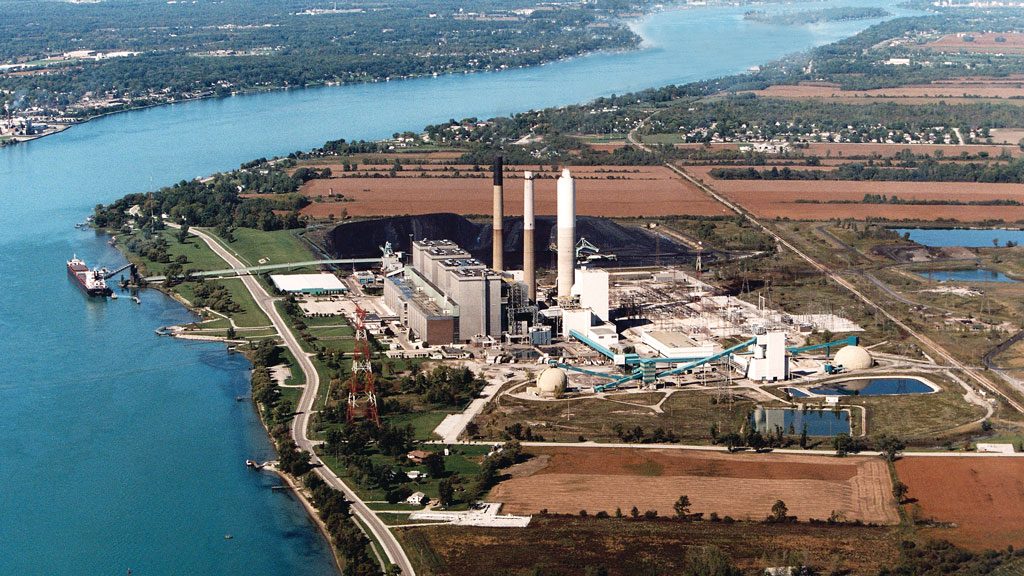Demolition is underway on one of Ontario’s last coal-fueled plants — the Lambton Generating Station in southwestern Ontario.
Work to date “has gone smoothly,” considering the “complex nature” of the project which consists of structures sprawling over a 1,300-acre site that had a power generating capacity of 1,976 MW at its peak, says Dan Roorda, Ontario Power Generation’s project manager for the demolition and decommissioning.
Roorda describes a planning and engineering process to the job that is much bigger than it might appear to passersby. “Identifying the stakeholders, the risks and planning the work in an orderly fashion is complex and very different from construction of a new generation facility.”
Developing a specification for the demolition “took many months,” he points out.
“A lot of engineering” went into planning the disconnection of utility services of the powerhouse — “the hub of the site” — and reconnecting them from a different power feed to facilities such as the main gate, dock, truck scale and an office building that will remain in service while the demolition takes place.
“At the end of the day we wanted to eliminate all hazardous energies from the powerhouse and turn it over to the (demolition) contractor in a black state (no energy) so they could start anywhere and everywhere in taking things apart.”
OPG began the decommissioning in 2016 because it couldn’t get the green light from the province to re-outfit the coal facility with natural gas. The plant had been shuttered since 2013.
JMX Contracting was awarded the demolition contract this summer after OPG had done extensive work, including the removal of hazardous substances. For instance, it drained oils from transformers and removed a PCB storage compound, says Roorda. Some of the oils can be resold, if they are PCB free.
JMX’s $30 million contract primarily covers mechanical demolition (taking down all the buildings) but asbestos remediation and draining and removal of excess oils that could not be removed by OPG are included in its contract, he says.
Demolition of the two west smokestacks is scheduled for demolition next summer while the remaining east stack will be dropped in 2020. The 550-foot tall stacks will be imploded, says Roorda, noting that JMX will sub out the work.
The project manager says the proximity of the stacks to the site’s switchyard presents a challenge to mitigate damage risk from vibration, flying debris and the dust cloud. Mitigation includes noise buffers (berms possibly comprised of scrap from the demo) and dust abatement, including water spray, dust curtains and debris shields.
Populations impacted by the project include First Nations, the community of Courtright residents in Michigan state just across the St. Clair River from Lambton.
The third and final phase — an environmental closure plan — will include cleanup of the sewage lagoon and various ponds, Roorda says, adding the total demolition and environmental cleanup tab is estimated at $60 million.
No plans have been made for the site once demolition is completed, he adds.
While in principle the Lambton demolition is similar to the Nanticoke generating station demolition on Lake Erie, the two pose different challenges because the sites are configured “quite differently.”



Recent Comments